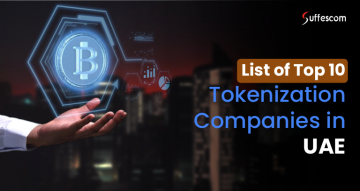How to Build a Decentralized Exchange (DEX) in 2026: Step-by-Step Guide for Beginners

In 2025, building a decentralized exchange (DEX) is one of the most profitable ventures in the crypto space. As adoption of DeFi and digital assets accelerates, launching your own DEX platform allows you to capitalize on growing demand for peer-to-peer crypto trading.
This guide breaks down the entire DEX development process—from understanding key models to launching a fully functional platform.
Why Build a Decentralized Exchange (DEX) in 2026?
- In January 2025, DEXs across all chains achieved a record trading volume of approximately $564.56 billion, marking a new high for the third consecutive month.
- The DEX derivatives market is projected to double, reaching $3.48 trillion in 2025, up from $1.5 trillion in 2024.
- DEXs now account for 20.5% of total spot trading volumes, a record high, indicating a significant shift towards decentralized trading platforms.
These statistics hint at higher market growth and user demand. They also emphasize that the investment to build a DEX will likely yield favorable results. First, it is important to understand DEXs to understand why they are gaining attention.
What is a Decentralized Exchange?
A decentralized exchange (DEX) is a peer-to-peer marketplace where crypto users trade directly from their wallets, without any intermediaries.
Unlike centralized exchanges that hold user funds and can suffer from hacks or government shutdowns, DEXs are non-custodial and run on smart contracts, ensuring users retain full asset control.
Benefits of a DEX:
- Peer-to-peer trading
- Increased privacy and anonymity
- No central control or custodial risks
- Transparent and tamper-proof transactions
Types of DEX Models: AMMs, Order Books & Aggregators
DEXs have become a major component of all the financial activities happening on the blockchain. Let's understand the most common models of DEXs.
1. Order Book DEXs
Order book DEXs execute trades in a way that traditional order books does. Under this model, market makers provide liquidity to the exchanges by placing limit orders on the order book.
Market makers are bots that run on set strategies according to market conditions. As soon as another user fills an order, they get a percentage rebate of the order size.
Users can access the order book to check the current supply and demand to place customizable orders.

2. Automated Market Makers (AMMs)
Automated Market Makers (AMMs) are smart contracts deployed on-chain to automatically process trades between tokens using a liquidity pool architecture. Unlike the traditional order book model, AMMs determine prices using mathematical computations. An AMM should be equipped with additional features such as DeFi staking, lending, and an NFT marketplace for maximum functionality.
3. DEX Aggregators
Such DEX protocols aggregate liquidity from multiple DEXs to get the best rate for the users. DEX aggregator development services scan prices on different DEXs, optimize the token count to swap on each exchange to reduce slippage, and find the best swap rate.
Top Strategies to Build a Successful DEX
Take note of these three essential strategies to build a DEX and get a competitive advantage.
1. Niche Markets
Look for a specific community or market with specialized needs that wants more from the existing DEXs. Create your own decentralized exchange to fill this demand-supply gap. Being the first DEX on a new blockchain offers multiple promising opportunities.
It provides a first-mover advantage and higher user engagement, as the traders will have no other option but to trade on your platform rather than swapping on another blockchain and bridging tokens.
2. Trading Mechanisms
Analyze the currently available DEXs in the market and whether they are equipped with innovative trading mechanisms.
Let's understand with an example: Earlier, DEX like Uniswap V2 didn't have the concept of concentrated liquidity, but now, in the latest version, Uniswap V3, liquidity providers are bringing higher capital efficiency that results in a higher revenue share on the capital.
3. Focus on User Experience
It is important to set your DEX apart from the others. Build a DEX that supports multiple platforms, such as web or mobile. A DEX with a high user experience attracts and retains users as it makes trading easier, efficient, and user-friendly.
Step-by-Step Process to Launch a DEX Platform
A standardized and detailed process is essential to build a decentralized exchange. The process starts with-

1. Market Research and Competitor Analysis
Every app development process starts with understanding the current market trends and how the competition runs. Study the competitors and analyze the top DEXs, such as Uniswap, SushiSwap, and PancakeSwap, for features, fees, token incentives, and UI patterns.
Effective market research helps identify the supply-demand gap to create a DEX that actually meets users' requirements. Survey potential users or communities to ascertain their demand.
2. Strategic Planning
Without an effective strategy, achieving anything fruitful is highly complex. Given the cut-throat competition, it is important to set a strategy and create a business model. Without the clarity of these two points, a DEX with advanced features can succumb to the market's brutality.
It is crucial to define the following components to build a decentralized exchange:
- Liquidity and Revenue Strategy: Does your DEX platform offer rewards for liquidity mining, and how will it earn revenue, whether via trading, listing fees, or premium features?
- Tokenomics: Deciding on issuing the governance token, how will it be distributed and controlled?
- Community Governance: What would be the level of democratization of decision-making that will be allowed to the users?
3. Choose Your Blockchain & Protocol Model
A blockchain and protocol model decides the gas costs, user base, developer tools, and composability with other DeFi protocols. The proper chain/protocol mix ensures performance and security.
Picking the wrong network can result in high fees, low throughput, or poor tooling. An ill-fitting protocol model may also underdeliver on user expectations (e.g., high slippage).
4. Deciding the DEX Architecture and Features
Understanding how to build a decentralized exchange requires careful selection of DEX architecture components and features, including back-end and front-end layers and auxiliary services.
A clear architecture prevents scope creep and integration complexities. It helps the development team know which pieces to build and how to connect. Without a blueprint, you risk duplicate work, mismatched interfaces, or missing critical components, which can cause delays, cost overruns, and technical debt.
5. Smart Contract Development and Testing
As the supporting pillar of DEX, smart contracts facilitate automated, secure, and transparent trading without intermediaries. Among other benefits, smart contracts provide higher decentralization, security, transparency, automation, and accessibility.
Smart contracts development and testing identify bugs and flaws. Compromising with testing leads to exploits, fund loss, brand's reputation damage, and total protocol collapse.
6. Designing the User Interface
This step involves creating responsive wireframes and intuitive pages. When exploring how to build a decentralized exchange, it's important to design clear user flows for connect-wallet, swap, add/remove liquidity, and analytics.
Designing a user-friendly front end lowers the barrier for new users, boosts trust, and encourages higher trading volume. Good onboarding also reduces drop-off rates.
A confusing or complex UI instantly drives users away. Low adoption means low liquidity, creating a vicious cycle that restricts growth.
7. Integrate Wallet and Security Measures
Security features enable potential users to trust DEX more. Allow the users to connect their digital wallets to your platform securely. Implement protective measures such as two-step verification and encrypted data storage to safeguard user assets.
Integrating wallets and security measures assures users they can trust your platform with their funds, fostering confidence and encouraging usage. Implementing robust security is essential as a key step in understanding how to build a decentralized exchange; without it, users' funds could be at risk, leading to loss of trust and potential legal issues.
8. Testing and Auditing
It is essential to get experts to review your platform for vulnerabilities. Simulate heavy usage scenarios to ensure stability under pressure. Why is testing important?
- Identifies and fixes potential issues before they affect real users
- Ensures a smooth and secure experience
Undetected flaws could lead to hacks or system failures, damaging your reputation and causing financial losses.
9. Launching DEX on the Network
Launch your DEX on the main blockchain network, making it accessible to users. Implement tools to monitor performance and detect issues in real time. Identifying and addressing these issues early in the process helps ensure smooth operations.
Without monitoring, issues may go unnoticed, leading to user dissatisfaction and potential security breaches.
10. Go-to-Market and Liquidity Mining
Promote your DEX to attract users and encourage them to provide liquidity by offering rewards, enhancing the platform's trading capabilities. A well-executed launch strategy and incentive programs can rapidly grow your user base and trading volume.
Without users and liquidity, your DEX may struggle to function effectively, deterring potential users.
11. Iterate, Upgrade & Maintain
Continuously improve your DEX by adding new features, fixing bugs, and adapting to user feedback and market trends. Build the DEX application focusing on staying competitive and responsive to user needs, ensuring long-term success.
Neglecting updates can lead to outdated features, security vulnerabilities, and losing users to more innovative competitors.
Why Partner With a DEX Development Company?
Choosing a reliable DEX development company is crucial, as DEX's performance is highly dependent on the kind of developer you choose!
1. True Asset Ownership
Users retain full custody of their funds via non‑custodial wallets. The developer builds the platform in a way that the users never have to give their funds to the exchange. Instead, all trades happen directly from the user’s wallet, using secure programs called smart contracts.
2. Streamlined Onboarding
DEX developers create a simple and straightforward sign-up process, help users connect their wallets easily, and provide helpful guides or tutorials. Most importantly, they offer support if users have questions or face problems, so they feel confident and comfortable using the exchange immediately.
3. Community Governance
A professional DEX development company sets up community governance by allowing users to vote on important decisions about how the platform runs. The company also builds an easy-to-use system where these votes can happen fairly and safely. It gives users a real say in how the DEX grows and helps build trust and loyalty in the community.
4. Robust Data Privacy
The reliable company employs end‑to‑end encryption to safeguard users' personal information and transaction details. They also avoid storing personal details unless absolutely necessary and build the exchange so that users stay in full control of their own data and funds.
Regular security checks and updates help protect everything, so users can trade confidently, knowing their privacy is respected at every step.
Conclusion
It is important to tap the potential of decentralized exchange by doing this simple step; launch your own DEX platform.
The process starts with market research and competitor analysis. Further, the steps to develop a decentralized exchange is followed by choosing a blockchain and protocol model, deciding on the DEX architecture and features, developing and testing smart contracts, designing the user interface, integrating wallet and security measures, launching DEX on the network, market launch and liquidity mining, and iteration and maintenance.
To ensure the satisfactory results, do check out the three important strategies for building a DEX which includes identifying niche markets, setting trading mechanisms and developing DEX with higher user experience.
It is essential to choose the right DEX or cryptocurrency exchange development services to get the best results. Suffescom Solutions is your ideal choice for creating DEX and blockchain development. From crypto wallet development to stablecoin development, we offer it all!
FAQs
1. What is a decentralized exchange (DEX)?
A DEX is a peer-to-peer crypto marketplace where trades occur directly between wallets without intermediaries.
2. How much does it cost to build a DEX?
The cost to build a decentralized exchange falls between $10,000 and $30,000 including essential development components such as UI/UX design, development, testing, and market launch.
3. How to create your own decentralized exchange?
Follow a step-by-step process including market research, strategic planning, protocol selection, smart contract development, UI design, testing, and launch.
4. Which is the best decentralized crypto exchange platform?
Uniswap, PancakeSwap, and dYdX are top examples due to liquidity, features, and active communities.
5. What are the benefits of setting up a decentralized finance exchange?
DEX platforms offer several benefits: higher security, transparency, lower risks, lower fees, fewer market manipulations, maximum reliability, scalability, privacy, and anonymity. Only professional decentralized exchange software development services can deliver scalable solutions.
6. Why consider Solana DEX development for your next project?
Solana DEX development offers high throughput, low transaction costs, and near-instant finality—ideal for building fast, scalable decentralized exchanges in 2026.







